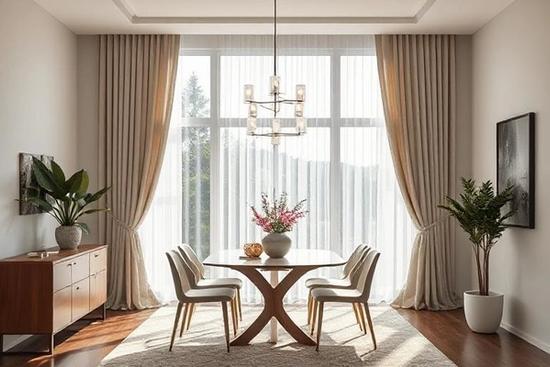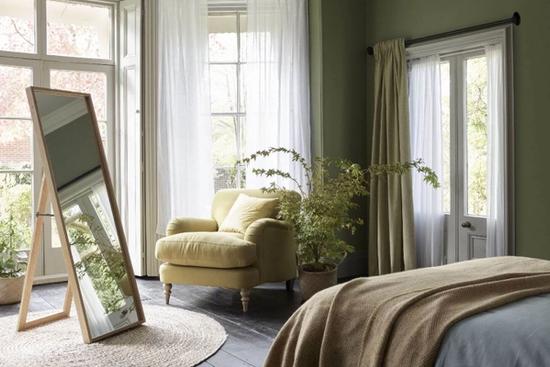Curtain Tiebacks 101

Are you ready to add the finishing touch to your windows? Curtain holdbacks and tiebacks can effortlessly transform your window treatments, accent your decor and help showcase the view outside.
We’ve put together a comprehensive guide covering all your pressing questions about curtain holdbacks and tiebacks:
- What Are Curtain Holdbacks and Tiebacks?
- Holdbacks vs. Tiebacks: What’s the Difference?
- How to Install Curtain Holdbacks and Tiebacks
- How to Secure Your Curtains With Holdbacks and Tiebacks
- Popular Curtain Tieback Styles
What Are Curtain Holdbacks and Tiebacks?
Curtain holdbacks and tiebacks (also called curtain pull backs) are accessories that gather and hold curtains open.
Whether you’re making a decorative statement with your curtains or using them to control light and privacy (or both!), there are many options to consider.
Curtain holdbacks are tiebacks that serve the same functions, but differ in style and installation process. Next, let’s break down the difference between curtain holdbacks and curtain tiebacks.
Holdbacks vs. Tiebacks: What’s the Difference?
A curtain holdback is a u-shaped piece of hardware that attaches to a wall near a window frame. Pulling a curtain behind a holdback holds the curtain open. Curtain holdbacks are usually made of rigid materials like metal, iron or wood.
If your curtains are functional (vs. decorative), holdbacks are a good choice. Their fixed position makes opening and closing curtains easy.
Curtain tiebacks wrap around a curtain, usually attaching to a hook on the wall. They can also gather a curtain in the middle of a window and hang freely. Tiebacks are made of flexible materials like fabric, rope or cord.
Tiebacks are a good option if your curtains are decorative and usually remain open.
How to Install Curtain Holdbacks and Tiebacks
What height should curtain holdbacks or tiebacks be? Here are a couple of steps to follow when installing holdbacks or using tiebacks:
- Measure your curtains. Measure the length of your curtains and divide by three. Curtains can vary in length, but standard lengths are 84, 95, 108 or 120 inches. Standard lengths for café curtains (commonly used in kitchens) are 24 or 36 inches.
- Set the height of your holdback or tieback. Hang each tieback hook a third of the way up from the bottom of the curtain. Buffer three inches from the edge of the window. For example, if your curtain is 84 inches long, you would place the tieback about 28 inches from the bottom. A tieback for a 36-inch long cafe curtain would be placed 12 inches from the bottom.
- Install or secure the holdback or tieback. Once you’ve marked the perfect position, you can install the holdback to the wall or window frame, or wrap the tieback around the curtain.
Pro Tip: While these are standard measurements for curtain hardware, remember that beauty is in the eye of the beholder. If you don’t like the way your holdback or tieback looks, feel free to make it higher or lower!
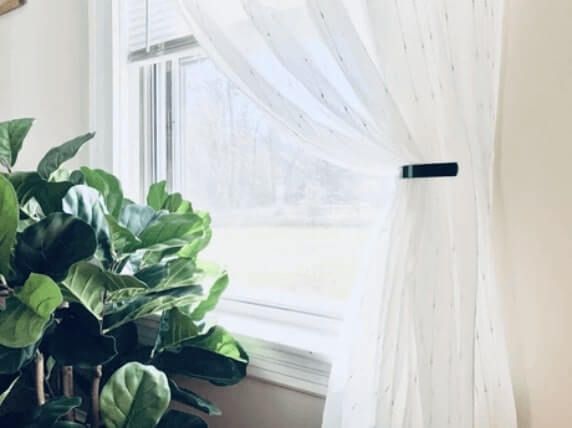
Kwik-Hang makes installing curtain holdbacks a breeze! Simply tap our curtain holdback hooks into the side of your window frame with a hammer or mallet — no drilling necessary.
How to Secure Your Curtains With Holdbacks and Tiebacks
First, close your curtains completely.
- How to use holdbacks: Pull your curtains gently behind each holdback. Adjust the draping above the holdback to your preference. You can either let the curtain hang straight down or let it drape loosely for a more billowy look.
- How to tie curtains: Wrap the tieback around each curtain. Pull the curtain back and secure the tieback to the hook on the wall, making sure the curtain covers it. Adjust the curtain above the tieback to achieve a straight or more drapey look.
Pro tip: If your curtains aren’t draping to your liking, you may not have enough curtain fullness. You should never hang curtains that are only as wide as your window (like a 60-inch window with a 60-inch curtain). Follow these guidelines to achieve the right curtain volume:
- Standard curtain fullness: 2x your window width
- Deluxe curtain fullness: 2.5x times your window width
- Maximum curtain fullness: 3x your window width
Example: If your window is 60” wide and your panels are 40” wide each, two panels would not achieve standard curtain fullness. In this case, it would be easiest to use two panels on each side to get slightly more than deluxe curtain fullness.
Popular Curtain Tieback Styles
Curtain tiebacks are available in a variety of styles to match your home’s decor. Here are a few popular style ideas:
1. Cord Tiebacks

Cord tiebacks with tassels are a stylish traditional look. While often used with heavy drapes, you can get tassels in many styles, sizes or colors to complement formal decor in living and dining rooms.
2. Fabric Tiebacks

This matching fabric tieback uses a stylized hardware post to secure it to the wall. The tieback features a beaded trim that adds a more traditional, formal touch to this room’s decor.
3. Floral Tiebacks
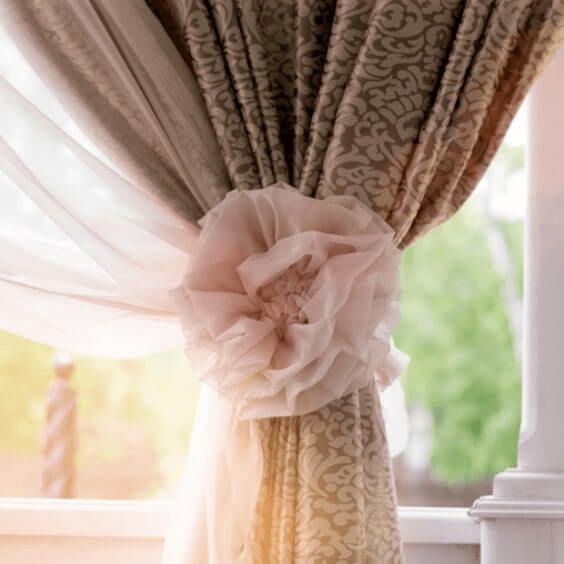
Using tiebacks with floral accents adds a feminine or French country touch to any room. Try using a single flower or strand of flowers to switch up the look.
4. Ribbon Tiebacks
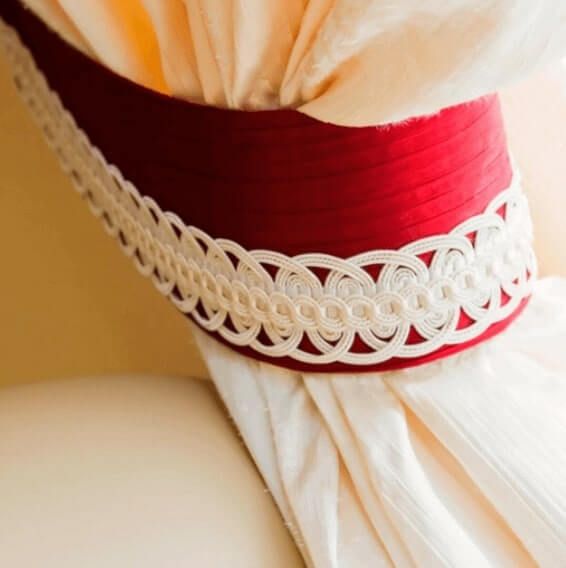
Are you looking for a simple and fun DIY project? Ribbon tiebacks are easy to create. Choose colorful ribbons that match the color scheme and style of your room. This look is ideal for a kid’s room or guest room.
5. DIY Curtain Tiebacks

Having a hard time finding the right tiebacks for your decor? Creating DIY curtain tiebacks is easier than you think.
Try using feathers, beads, scarves or chains, for example, to create unique tiebacks that reflect your decor and your personality.
Check out five quick and easy DIY curtain tieback ideas here.
Complete Your Window Treatments with Kwik-Hang
There’s a lot to consider when it comes to hanging your curtains and styling them. But the process should be fun — not challenging.
Kwik-Hang curtain rod brackets and holdbacks are the easiest way to hang your curtains in seconds. No need to use screws, nails or drills!
Just position the hardware to your window trim, tap into place with a hammer and that’s it — it doesn’t damage walls or require precise measurements.
With Kwik-Hang, you can hang your curtains perfectly and correctly the first time around.
Try Kwik-Hang today!



